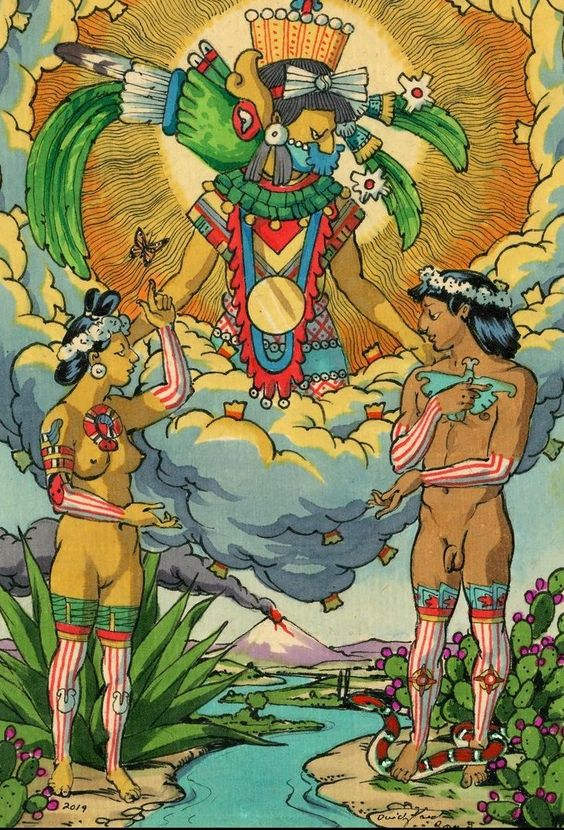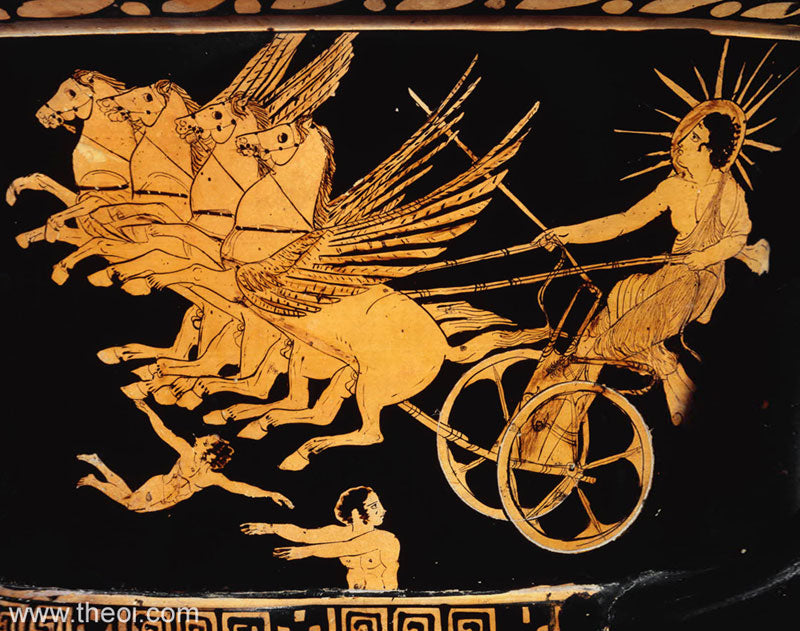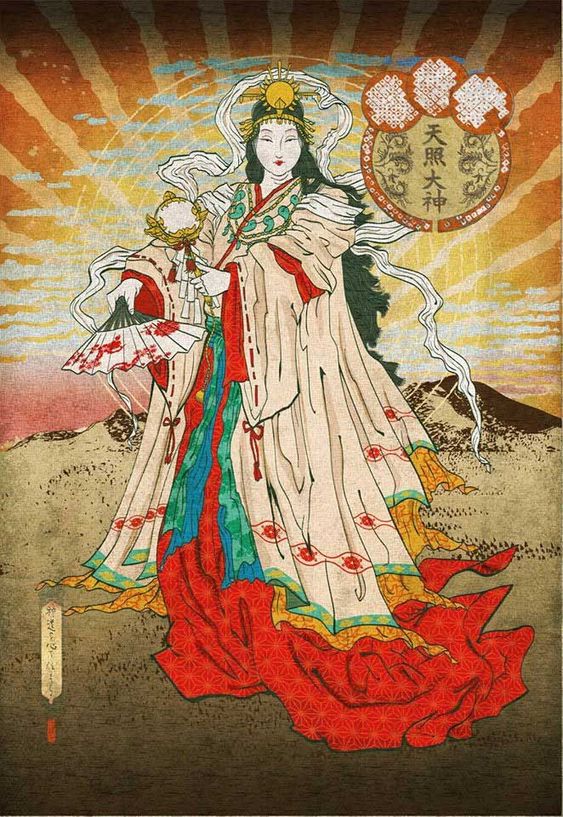Since the dawn of human civilization, the sun has been a powerful and revered symbol. Its significance is reflected in ancient rock carvings from the Neolithic period and evolves through sophisticated depictions in Egyptian, Aztec, and Japanese mythologies. The sun's symbolism spans various cultures, appearing in literature, art, and jewelry, where it embodies vitality, enlightenment, power, and renewal. This exploration uncovers the universal reverence for the sun and its timeless role in shaping human thought and culture.
Amuletha™ Book of Symbols
Sun Symbol
*The Sower by Vincent van Gogh
Vincent van Gogh's "The Sower," painted in 1888, radiates energy through its swirling colors and bold brushstrokes. Reflecting his deep connection to nature, this piece captures light and movement in a way that conveys renewal and hope. It's a powerful expression of Van Gogh's vision, transforming an everyday scene into a work of profound emotional and symbolic significance.

*The Sower by Vincent van Gogh
Vincent van Gogh's "The Sower," painted in 1888, radiates energy through its swirling colors and bold brushstrokes. Reflecting his deep connection to nature, this piece captures light and movement in a way that conveys renewal and hope. It's a powerful expression of Van Gogh's vision, transforming an everyday scene into a work of profound emotional and symbolic significance.
SUN SYMBOL ORIGIN
The symbol of the sun has been revered since the dawn of human civilization, often depicted as a radiant circle or with rays extending outward. Tracing back to the Neolithic period, the earliest known representations of the sun symbol were found in ancient rock carvings and artifacts, dating around 10,000 BCE. These depictions were simple yet powerful, embodying the sun's essential role in sustaining life and its profound influence on early agricultural societies.
As civilizations evolved, the sun symbol took on more sophisticated forms and meanings. In ancient Egypt, around 3000 BCE, the sun was personified by the god Ra, who was depicted with a solar disk atop his head. Ra's journey across the sky symbolized the cycle of life, death, and rebirth, a theme prevalent in Egyptian mythology. Similarly, the Aztecs of Mesoamerica, around the 14th century, revered the sun god Huitzilopochtli, believing that human sacrifices were necessary to ensure the sun's daily rise.
The sun symbol's significance extended across various cultures, each attributing unique meanings and narratives to it. In Hinduism, the sun is represented by Surya, the solar deity who rides a chariot pulled by seven horses, symbolizing the seven days of the week. The ancient Greeks, around the 5th century BCE, worshiped Helios, who traversed the sky in a golden chariot. These diverse representations highlight the universal reverence for the sun, reflecting its vital importance to human existence and its enduring symbolism across different epochs and civilizations.
What does sun symbolize
While the sun symbol carries numerous nuanced meanings, these four are the most universally recognized and embraced:
Life
Essential for growth and survival, the sun provides energy for photosynthesis, supporting all ecosystems.
Enlightenment
The sun represents clarity, truth, and wisdom, dispelling darkness both literally and metaphorically.
Power
Symbolizing strength and authority, the sun's immense energy influences the Earth's climate and is revered in various myths.
Renewal
The sun's daily rise signifies new beginnings, embodying renewal and the continual cycle of life and death.
Cultural mention
Throughout human history, the sun has been a powerful and universal symbol, representing life, power, and the natural order. It is often seen as the ultimate source of energy, light, and warmth, embodying the cycles of life, renewal, and time. The sun’s daily journey across the sky has inspired countless myths and stories that reflect its immense power and significance, symbolizing both creation and destruction. As a cosmic force, the sun has also been associated with authority and divine influence, shaping human spirituality and understanding of the universe. Whether in ancient rituals, philosophical thought, or scientific discovery, the sun continues to be revered as a central and enduring symbol, reflecting its profound impact on cultures and beliefs across the world.
The Aztec Sun Stone
The Aztec civilization revered the sun god Huitzilopochtli and believed that human sacrifices were necessary to keep the sun moving across the sky. The Aztec Sun Stone, or Calendar Stone, is a massive 24-ton basalt artifact discovered in 1790 at the Templo Mayor in Mexico City. It depicts Tonatiuh, the sun god, at its center with a sacrificial blade in his mouth, symbolizing the sun's need for human blood. Surrounding this central image are intricate carvings representing the days, months, and cosmic eras of the Aztec calendar, including the four previous suns, each ended by a catastrophe. The outermost ring features two fire serpents, Xiuhcoatl, symbolizing solar deities and the passage of time. This stone encapsulates the Aztecs' sophisticated astronomical knowledge and their belief in the cyclical nature of time, highlighting the sun's pivotal role in maintaining cosmic order and the spiritual obligations of the Aztecs to their deities
*Huitzilopochtli looking down on Oxomoco and Cipactonal, the first human couple in Aztec tradition.

*Huitzilopochtli looking down on Oxomoco and Cipactonal, the first human couple in Aztec tradition.
Helios in Greek Mythology
In ancient Greek mythology, Helios was the personification of the sun, depicted as a radiant god who drove a golden chariot pulled by four horses across the sky each day, bringing daylight to the world. One of the most famous stories involving Helios is the tale of his son Phaethon, who, eager to prove his divine heritage, begged his father to let him drive the sun chariot for a day. Despite Helios's warnings about the dangers, Phaethon insisted. Unable to control the powerful horses, Phaethon veered off course, scorching the earth and creating deserts while also freezing other parts, causing chaos. Eventually, Zeus was forced to intervene, striking Phaethon down with a thunderbolt to prevent further disaster. This myth not only underscores the immense power and responsibility associated with the sun but also serves as a cautionary tale about the perils of hubris and the consequences of attempting to control such a formidable force.
*Helios god of the sun, Athenian red-figure krater 5th century B.C

*Helios god of the sun, Athenian red-figure krater 5th century B.C
Copernicus and the Heliocentric Revolution
One of the most transformative moments in the history of human thought is the story of Nicolaus Copernicus and his groundbreaking heliocentric model. In the 16th century, Copernicus revolutionized our understanding of the cosmos by proposing that the Sun, not the Earth, was the center of our solar system. This was a radical departure from the geocentric models that had dominated for centuries. Copernicus' work, "De revolutionibus orbium coelestium," published in 1543, detailed his observations and mathematical calculations that supported this theory. This paradigm shift not only challenged the prevailing scientific views but also had profound implications for philosophy, religion, and our place in the universe. Copernicus' heliocentric theory laid the groundwork for future astronomers like Galileo and Kepler, ultimately leading to the broader acceptance of the true structure of our solar system. This tale of scientific bravery and intellectual revolution remains a cornerstone of scientific history.
An early heliocentric model of our galaxy

An early heliocentric model of our galaxy
The Japanese Sun Goddess Amaterasu
In Shinto belief, Amaterasu is the sun goddess and one of the most revered deities in Japanese mythology, embodying the essence of life, light, and the universe. According to legend, Amaterasu retreated into a cave after a violent quarrel with her brother, Susanoo, the storm god, plunging the world into darkness and chaos. The other gods, desperate to restore light, devised a plan to lure her out by staging a lively celebration outside the cave, featuring music, dance, and a large mirror. Intrigued by the noise and curious about her own reflection, Amaterasu emerged, and the gods quickly sealed the cave, allowing light to return to the world. This story highlights the sun's vital role in maintaining order and life, symbolizing renewal and the triumph of light over darkness. Amaterasu's central place in Shintoism reflects the deep cultural and spiritual significance of the sun in Japan, influencing various aspects of Japanese life, including festivals, rituals, and the imperial family, who are considered her direct descendants.
Amaterasu depiction in Japanese folklore

Amaterasu depiction in Japanese folklore
Sun symbol in the world of jewelry
The sun symbol holds a special place in the world of jewelry, often chosen by those who wish to convey vitality, warmth, and positivity. People across various age groups wear sun-themed jewelry to express their admiration for the sun's life-giving energy and its role as a universal symbol of light and hope. Younger individuals might wear sun motifs to reflect their energetic and optimistic outlook on life, while older wearers might choose the symbol to represent wisdom and enduring strength. The sun's religious connotations are also significant, with many wearing sun jewelry to signify their spiritual beliefs, such as the divine light or the eternal soul in different cultures.When given as a gift, sun-themed jewelry carries profound meaning. It often symbolizes encouragement, love, and a wish for the recipient's happiness and prosperity. For example, a sun pendant gifted to someone embarking on a new journey in life can symbolize a bright and successful future. Similarly, sun amulets can be tokens of friendship, signifying warmth and unwavering support. These gifts are not only beautiful but also deeply meaningful, embodying the giver's hope and positivity for the recipient's path ahead.
What does a sun symbolize in literature?
The sun symbol is a powerful and enduring motif in literature, often representing life, energy, enlightenment, and the passage of time. Its usage spans various genres and styles, from ancient myths and religious texts to modern poetry and prose. The sun frequently appears in literature to symbolize clarity, hope, and renewal, and is commonly featured in works that explore themes of growth, transformation, and the human experience. Notable authors and poets have utilized the sun to evoke profound emotions and highlight the cyclic nature of existence.
"The Old Man and the Sea" by Ernest Hemingway
In Ernest Hemingway's novel "The Old Man and the Sea," the sun symbol plays a crucial role in the narrative, serving as a constant companion to the protagonist, Santiago. As Santiago embarks on a grueling fishing expedition, the relentless presence of the sun underscores the themes of endurance and struggle. The sun's harsh glare reflects the brutal reality of nature, highlighting the physical and emotional challenges Santiago faces. At the same time, the sun's daily journey across the sky mirrors Santiago's own unwavering determination and resilience. Hemingway uses the sun to emphasize the passage of time and the cycle of day and night, symbolizing both the continuity of life and the inevitability of its trials. This powerful imagery enhances the story's exploration of human strength and the indomitable spirit of the protagonist.
"The Old Man and the Sea" illustration by Guy Harvey

"The Sun Rising" by John Donne
Busy old fool, unruly sun,
Why dost thou thus,
Through windows, and through curtains call on us?
Must to thy motions lovers' seasons run?
This poem addresses the sun directly, chiding it for interrupting the speaker's intimate moments, yet ultimately celebrating its importance and constancy.
"Ah, Sunflower" by William Blake
Ah Sunflower, weary of time,
Who countest the steps of the sun;
Seeking after that sweet golden clime
Where the traveller's journey is done;
Blake uses the sunflower's relationship with the sun to explore themes of aspiration and the desire for eternal life.
A Sunset of the City" by Gwendolyn Brooks
Already I am no longer looked at with lechery or love.
My daughters and sons have put me away with marbles and dolls,
Are gone from the house.
My husband and lovers are pleasant or somewhat polite
And night is night.
This poem reflects on aging and the passage of time, using the sun as a metaphor for the inevitable decline and setting of life.
Thoughts
Thoughts placed alongside a symbol resonate with its meaning, serving as a guide to expand your understanding of the symbol's significance in relation to your personal experiences. AMULETHA™ also embraces this approach, invites a deeper contemplation of how symbolic meanings can reflect and enrich your life’s narrative, enhancing your appreciation of both the symbol and its broader implications.
Life's Sustenance - The sun's radiant energy nourishes growth, fueling photosynthesis and sustaining the intricate web of all ecosystems.
Wisdom's Light - The sun unveils truth and clarity, banishing darkness and illuminating the path to enlightenment and understanding.
Cosmic Power - With its boundless energy, the sun commands the Earth's climate, embodying strength and revered authority in ancient myths.
Eternal Renewal - The sun's daily ascent heralds new beginnings, symbolizing the endless cycle of life, death, and rebirth.
FREQUENTLY ASKED QUESTIONS
What is the symbolic significance of the Sun in art?
In art, the Sun symbolizes life, energy, and vitality. It is a representation of enlightenment, wisdom, and the creative force, often depicted as a source of inspiration, strength, and renewal
What does the Bible say about the sun?
The Bible references the sun as a creation of God, symbolizing His power and glory. It speaks of the sun's role in marking time, providing light and warmth, and as a metaphor for God's unwavering presence and righteousness. For instance, Psalm 19:4-6 praises the sun's journey across the sky, while Malachi 4:2 refers to the "sun of righteousness" bringing healing and salvation.
What is the spiritual significance of the Sun?
The spiritual significance of the Sun encompasses themes of life, enlightenment, and divine power. It represents the source of life and energy, symbolizing clarity, truth, and spiritual awakening. Many spiritual traditions view the Sun as a manifestation of divine presence and a symbol of renewal and transformation, illuminating the path to higher consciousness and inner wisdom.
Why is the Sun considered a symbol of God?
The Sun is considered a symbol of God because it embodies qualities of divine power, creation, and sustenance. Its life-giving energy, light, and warmth are seen as reflections of God's ability to give life and maintain the universe. The Sun's constancy and central role in the cosmos also symbolize God's omnipresence and unwavering support, representing clarity, truth, and spiritual enlightenment across various religious and spiritual traditions.













